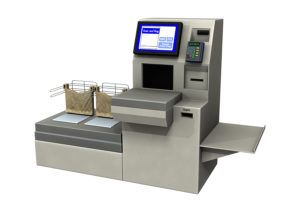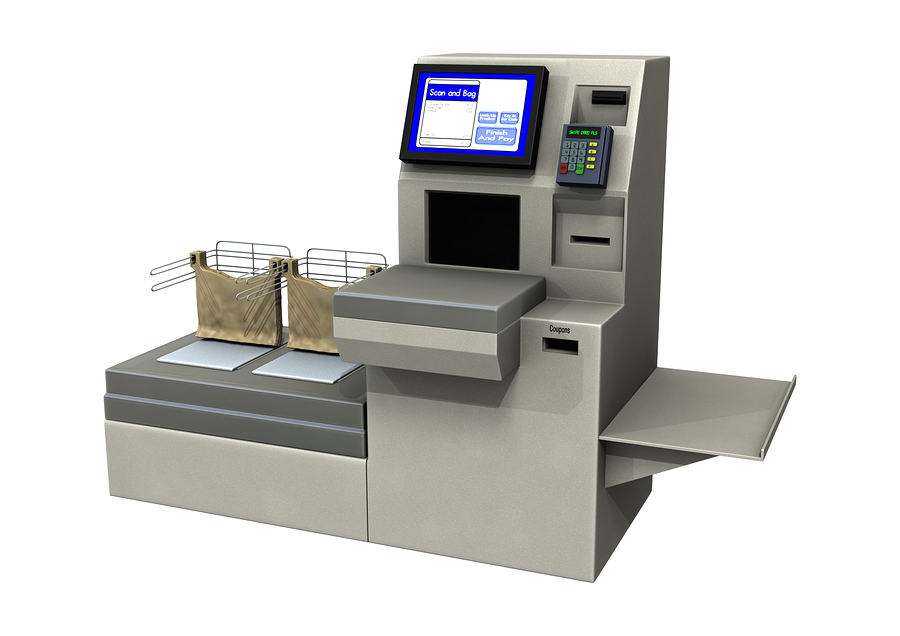Allowing customers to scan products and pay for them using their own mobile phones or iPads is becoming an increasingly common sight in retail outlets.
However, using Mobile Scan and Pay Technology (MSP) to pay for supermarket products could make it easier for people to steal and reduce people’s perception of legal consequence, according to a new report authored by University of Leicester criminologists.
Among the findings of the report is that the sense of risk perception felt by customers is reduced when using Mobile Scanning and Pay Technology, as human interaction is removed from the shopping process.
MSP also gives offenders ‘ready-made excuses’ for non-scanning behavior, such as blaming faulty technology, problems with product barcodes or claiming that they are not technically proficient.
The report was authored by Professor Adrian Beck and Dr, Matt Hopkins from the University of Leicester Department of Criminology and is funded by the Economic and Social Research Council (ESRC).
 “Both loved and loathed by consumers, with the phrase ‘unexpected item in the bagging area’ striking dread into many a shopper, self-scan technologies are growing in use and likely to become even more prominent as we begin to be encouraged to use our own mobile devices to both scan and pay for products in the stores we visited,” said Professor Beck. “From the retailers’ perspective, the benefits seem obvious – less investment required in staff and checkout technologies, with the former being the biggest expense they face. For the shopper it could mean the end of checkout queues as product scanning and payment can in theory be performed anywhere in the store at their convenience. To borrow a well-warn Top Gear phrase, ‘what could possibly go wrong’? Well, our research found that quite a bit could and does go wrong, with some potentially rather worrying long term consequences.”
“Both loved and loathed by consumers, with the phrase ‘unexpected item in the bagging area’ striking dread into many a shopper, self-scan technologies are growing in use and likely to become even more prominent as we begin to be encouraged to use our own mobile devices to both scan and pay for products in the stores we visited,” said Professor Beck. “From the retailers’ perspective, the benefits seem obvious – less investment required in staff and checkout technologies, with the former being the biggest expense they face. For the shopper it could mean the end of checkout queues as product scanning and payment can in theory be performed anywhere in the store at their convenience. To borrow a well-warn Top Gear phrase, ‘what could possibly go wrong’? Well, our research found that quite a bit could and does go wrong, with some potentially rather worrying long term consequences.”
The report found very high levels of loss associated with the new generation of self-scan technologies being introduced by retailers around the world.
Among the key findings of the report is that:
- MSP promotes ease of effort for theft by removing human contact in the shopping process.
- The sense of risk perception is reduced as all elements of the customer journey can be completed without human interaction.
- MSP gives offenders ‘ready-made excuses’ for non-scanning behavior – including blaming technology or lack of proficiency with MSP.
- It is difficult for retailers to identify whether customers intended to non-scan items or if they were simply absentminded or poor at scanning items consistently.
- Available data indicated that self-scanning technologies generated significantly high rates of loss, more than 122% higher than the average rate of loss.
- Retailers could find themselves accused of making theft so easy that some customers who would normally – and happily – pay are tempted to commit crime, especially when they feel ‘justified’ in doing it.
“Retailers are becoming aware of these problems and introducing ways of ‘amplifying’ risk in the mobile scan and pay environment, trying to ensure that all that ends up in the basket also makes it onto the receipt,” said Dr. Hopkins. “All innovations in retailing are a business choice – hopefully done to make the shopper happier and the business more profitable. But those same choices can also produce negative outcomes as well, such as increased opportunities for losses to occur.”
The study shows that some choices made by businesses might trigger behaviors and outcomes not originally envisaged and prove to be costlier than anybody expected.
The report ‘Developments in Retail Mobile Scanning Technologies: Understanding the Potential Impact on Shrinkage and Loss Prevention’ is available on request.
Source: University of Leicester
Was this article valuable?
Here are more articles you may enjoy.


 Texas Among Several States Facing New Fire Risks: Weather Watch
Texas Among Several States Facing New Fire Risks: Weather Watch  Justice Department Preparing Ticketmaster Antitrust Lawsuit
Justice Department Preparing Ticketmaster Antitrust Lawsuit  Supreme Court Allows More Transport Workers to Bypass Arbitration and Sue Employers
Supreme Court Allows More Transport Workers to Bypass Arbitration and Sue Employers  Report: Vehicle Complexity, Labor ‘Reshaping’ Auto Insurance and Collision Repair
Report: Vehicle Complexity, Labor ‘Reshaping’ Auto Insurance and Collision Repair 